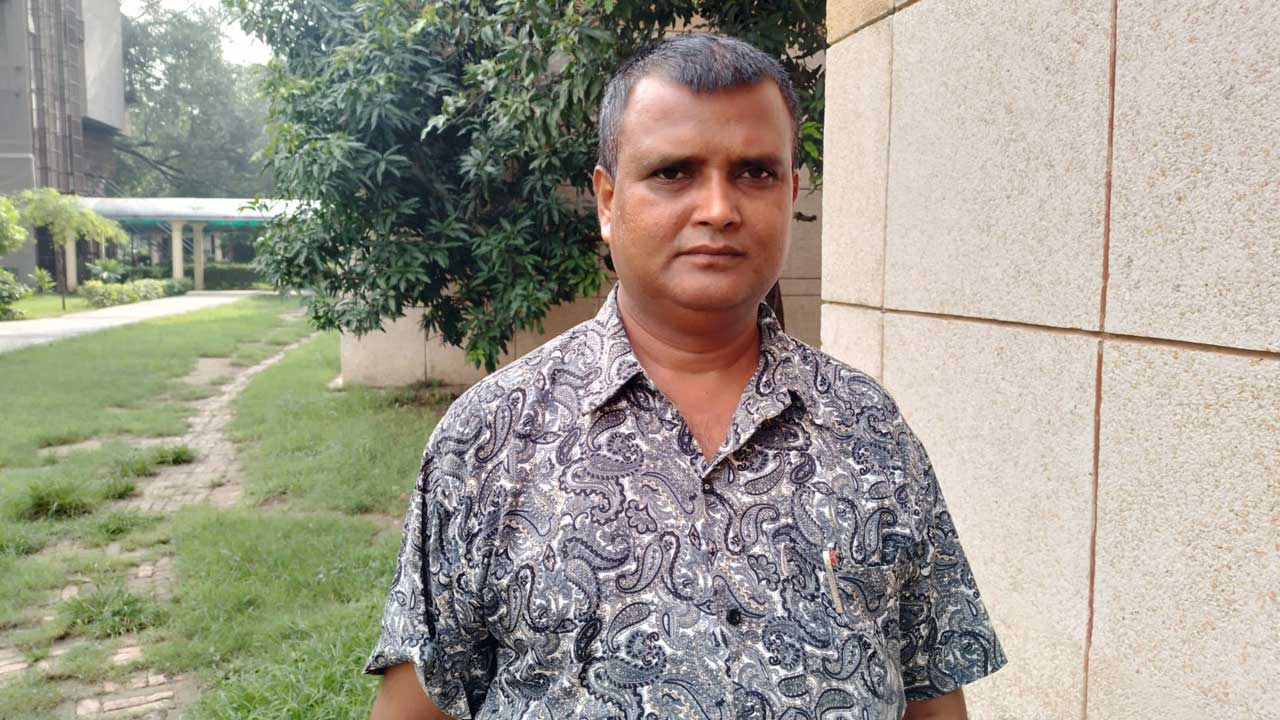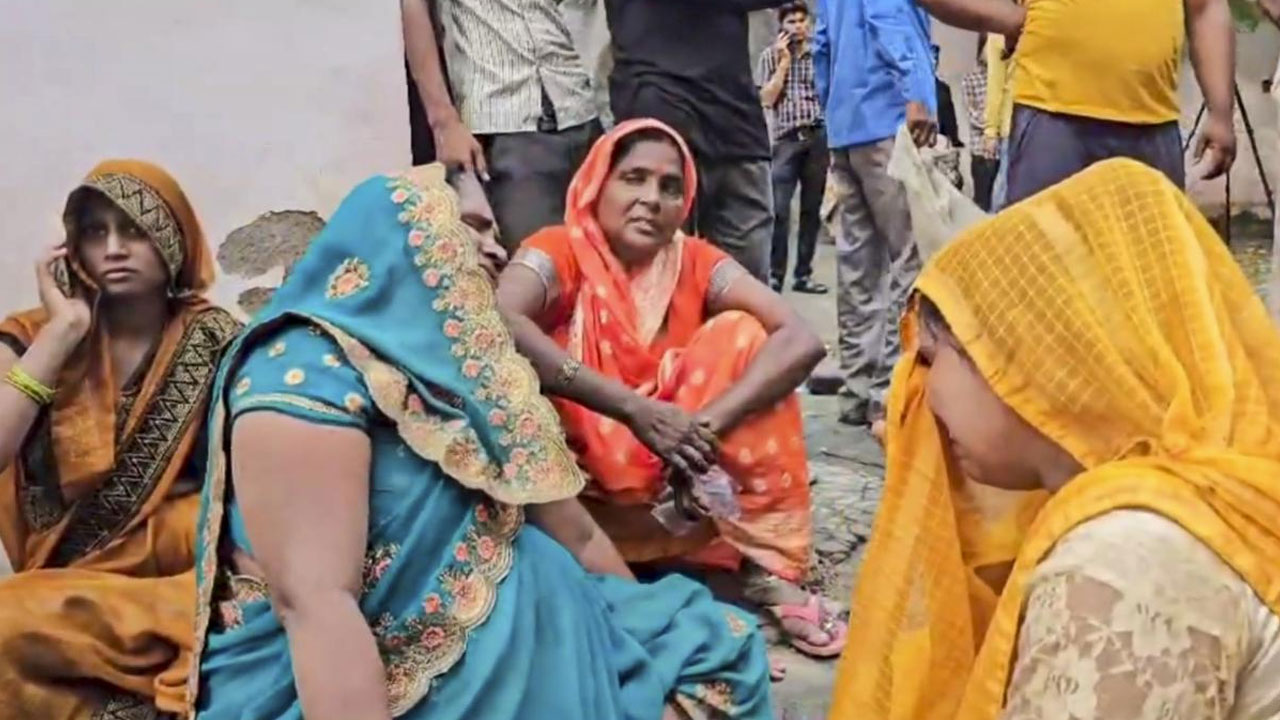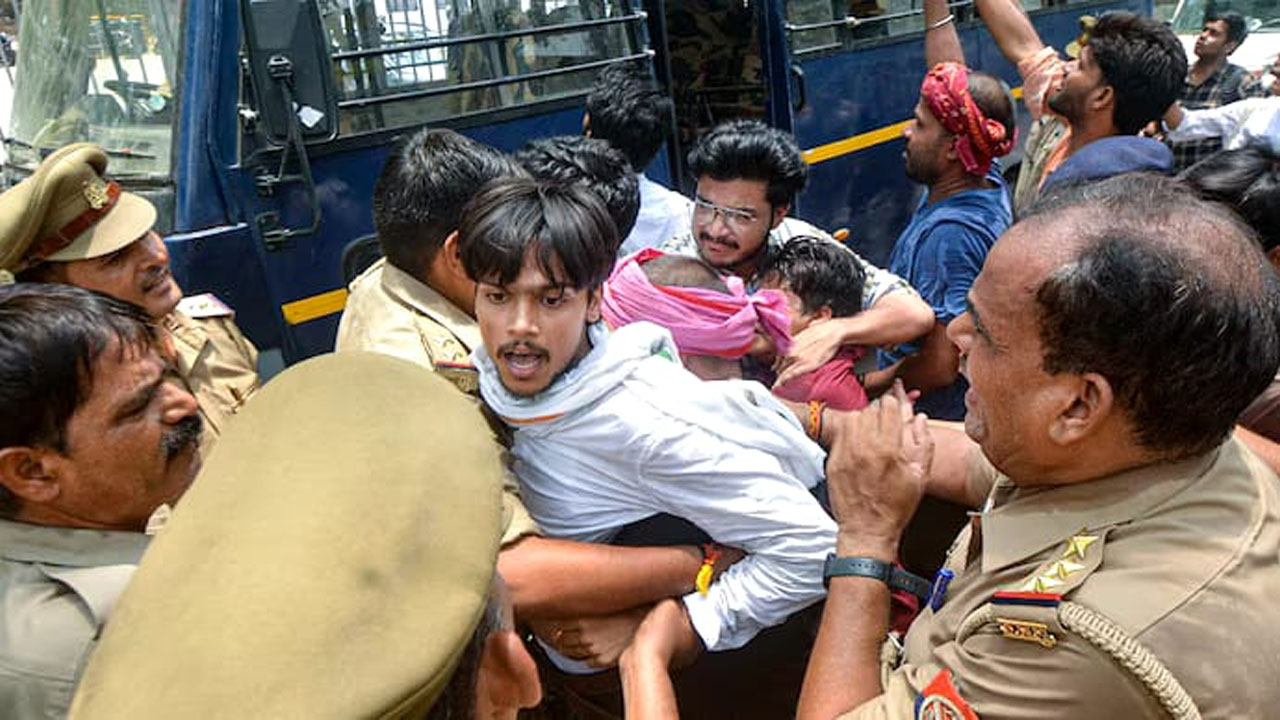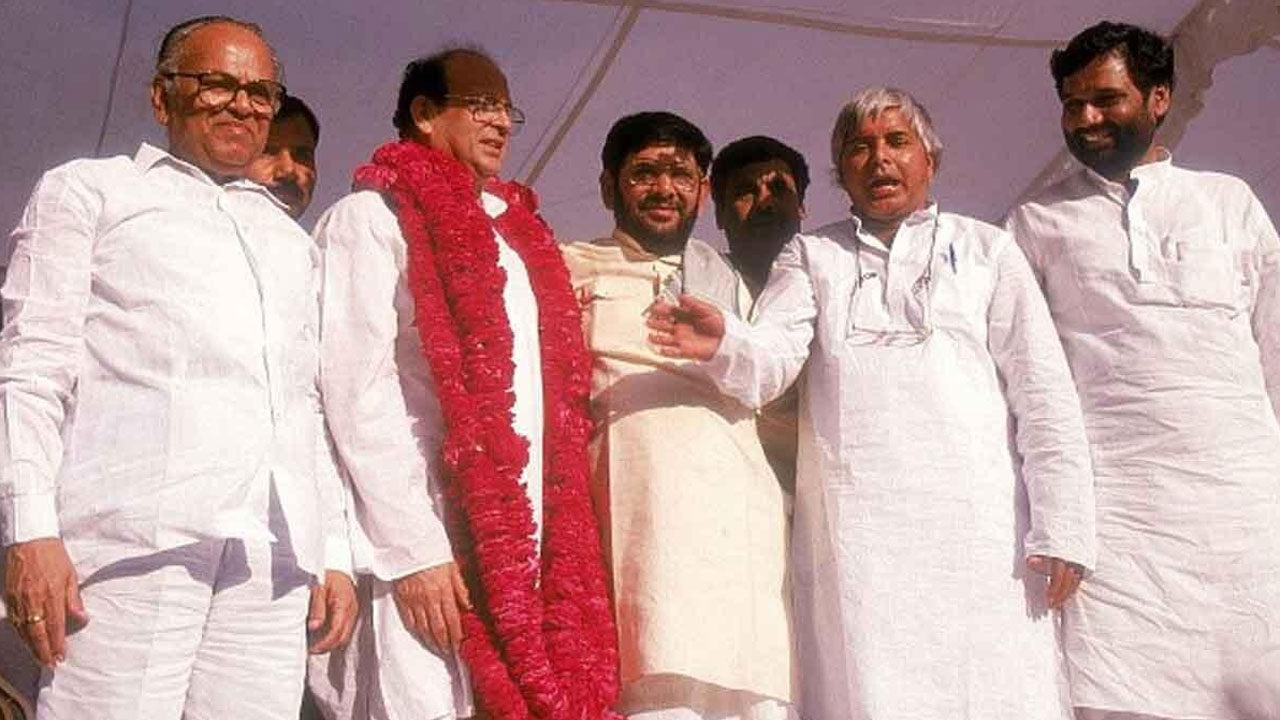Bir Bahadur Mahto is the chairperson of Antarrashtriya OBC Anusandhan Sansthan (International OBC Research Institute), Kathmandu. During his recent visit to Delhi, Nawal Kishore Kumar and Anil Varghese met him and discussed various issues related to the Dalits, Adivasis and OBCs of Nepal. Here is a lightly edited version of the conversation:
Do you find any difference between Brahmanism in India and in Nepal? Brahmanism has faced opposition in India for a long time. Do you think Nepal was lacking in this respect?
Before comparing and contrasting India and Nepal, let us be very clear that the two countries may have different political boundaries but they share a common cultural boundary. Of course, Nepal is not culturally as diverse as India is but they share the same culture and thus Brahmanism is our shared scourge. Just like India, Nepal, too, is battling the problems birthed by Brahmanism. There is not much difference. What is true about India is true about Nepal too.
In India, voices against Brahmanism have been raised from time to time. Has Nepal also been witnessing a similar phenomenon?
Yes. Similar voices were raised in Nepal, too. However, Nepal was a monarchy. It was ruled by a king. As long as there was monarchy, such voices were muzzled. People did raise their voices but they were silenced. Since the advent of democracy, voices against Brahmanism have become increasingly audible. A number of organizations working for protecting and promoting different languages, literatures and cultures have come up. Dalits also formed their own organizations, as did the other backward classes (OBCs). Picchda Varg Utthan Sangh was one such organization. After five years, the Pichhda Varg Uthhan Sangh was renamed Nepal Picchda Varg Mahasangh. Issues pertaining to the rights and the identity of the backward classes were raised under the banner of this organization. Struggles and the initiatives taken by the organization drew the government’s attention, which then set up a committee.
India has witnessed many movements aimed at annihilating caste. Did they impact Nepal, too?
Yes, they had a big impact. As I said earlier, culturally, India and Nepal are one. The movements launched here have a direct impact on Nepal. There are many organizations of Arya Samajis and Kabir Panthis. There is a Ravidas Sewa Samiti, a Loksatya Sangathan and a Mulniwasi Sangathan. All of them launched anti-caste movements. But they could not achieve as much success as they should have. But yes, there was some impact on society.
Are the Dalits, OBCs and Adivasis of Nepal united against Brahmanism?
The problem of Brahmanism has an easy solution. But we don’t act on it. For instance, what is most important in a democracy? It is the vote. It is invaluable. They (Savarnas) form 15 per cent of the population and we, who are called Adivasis, Dalits and OBCs, form 85 per cent.
So, the figures are almost the same as India?
Yes. They are almost the same. The Brahmin community comprises two groups – Khas (an indigenous group) and Brahmins. Now, even if the Khas and the Brahmins are taken together, they form 25 per cent of the total population. The remaining 75 per cent are Dalits, Adivasis and backwards. The Khas are also gravitating towards us. That will mean Brahmins will only be 15 per cent.

Who are the Khas?
They are the original inhabitants of Nepal. But the brahmanwadis have entrapped them, brought them under their umbrella. They wrote history shrewdly. They convinced the ancestors of the Khas that they are a part of the Brahmin community. And they did all this to establish their rule, their government. But the Khas are now saying that they are indigenous inhabitants and that their roots are not in Brahmanism. A movement along these lines has been launched there.
Which are the main castes of Nepal?
There is a Research Department in the Nepal government. Its latest report says that there are 144 castes. Of these 60 are Adivasis – those who are known as Scheduled Tribes in India. Then, there are 33 Dalit castes. There are 44 backward castes. The rest are minorities.
Which are the upper castes of Nepal?
There are two categories of nationalities. The first are those who call themselves Pahadi, who live in the hills. Then, there are the Madhesis. Madhesis and Teraian those who live in the plains. They form more than half of the population. Those living in the hilly region are about 40 per cent. They include Dalits, Adivasis and OBCs. There are Dalits, Adivasis and OBCs among the Madhesis, too.
What role did Brahmanism play in driving a wedge between the people living in the hills and in the Terai?
You see, everywhere, Brahmanism has only divided the people. They peddle hypocrisy, spread superstition.
How exactly do they do this?
For instance, if there is someone who doesn’t revere gods and goddesses, then they blackmail him. They promote child marriage, oppress and exploit women, and they describe women as lowly. They keep on drilling such ideas into the minds of the ordinary people and some day, the ordinary people start believing them. They do the same thing here. The literature they produce is misleading. It has nothing to do with the facts or truth.
In India, Adivasis dwelling in or near the forests are being Hinduized by the RSS. What is it like in Nepal?
Yes, it is the same in Nepal. They are getting temples built everywhere.
But Nepal was a Hindu Rashtra from the very outset?
It is not a Hindu Rashtra. It was once but not now. It is a secular nation today. Even when the king used to rule Nepal, there was this slogan, “one caste, one dress, one language”. When Nepal was a monarchy, anyone who raised his voice was crushed. Nepal has always been a country of the Buddha. A large number of Buddhists live there. There are also Muslims. There are also those who call themselves Hindus. Kabirpanthis are also a substantial number, as are those who revere Ravidas. Followers of Bon (a pre-Buddhism religion of Tibet) also live there and there are nature-worshippers, too. The Nepal government had given recognition to 10 religions, including Hinduism, Buddhism, Bon, nature worship, Bahai and Christianity.
Does your Constitution talk about ‘Sanatan’?
You see, ‘Sanatan’ just means natural and age-old. For some time now, they have been claiming that Hinduism is the Sanatan religion. This is not true. Sanatan and Hindu are different. Sanatan belongs to everyone. In human culture and civilization, everyone carved out a path for themselves as they wished. Sanatan was common to all. But they (Brahmins) affixed their tag to it. This was also a subject of debate here. But Sanatan means the oldest, what we call “nature”.
So, Sanatan has been used in that sense. But what is the objective?
Yes. Sanatan has been used in the sense of “age-old” and “nature”. Now, people may interpret it in different ways. These people claim that their religion is Sanatan and that Sanatan is Hinduism. But that is not the fact. Sanatan is the religion of everyone. Clearly, there were no religions on this earth before the emergence of human civilization, there was no caste system. Sanatan came from the Gana system. And there was nothing like that in the Gana system. So, Sanatan religion has been wrongly interpreted.
How did caste-based census come to be in Nepal? Has this helped in ensuring proportional representation in the government and the administration?
The democratic constitution, which has been promulgated, has addressed many issues. People say that the census figures are not correct. You see, the questions are tailored in a specific manner. Then, those who go out and collect the data also have some shortcomings. Then, there are guidelines from the State, from those in power. So, it is difficult to say how correct the data is. But it is government data and it has to be accepted. Anyway, it was a good effort.
Were the OBCs also counted? Why did the government do it? Was there a demand for it?
Yes. OBCs were also counted. Different caste organizations had demanded caste census. They told the government that they wanted to know which castes and how many people of each caste lived in Nepal. OBC Mahasangh, Dalit organizations and tribal organizations – all had made this demand.
When did it begin?
Census is conducted every ten years in Nepal. Many new questions were suggested for the census this time, and the government accepted them. No pressure had to be mounted; no big agitation had to be launched. The government easily accepted the demand that caste census should be held this time.
Was it done?
Yes, it was. Earlier too, caste census used to be held. But this time, greater attention was paid to some questions.
Has this led to a better representation of deprived sections in the government and the administration?
Yes, to some extent, the representation has increased. But there is a problem here. What happens is that people of different castes use the same surname. Then, people of the same caste use different surnames. For instance, I am from the Kushwaha caste and the people of my community use both Mahto and Mehta as their surnames. Then, there is a Tharu caste and they, too, call themselves Mahto. Nonias also use the surname Mahto. So, it is difficult to find out the caste of a Mahto. Similarly, Brahmins there use the surname Thakur. The traditional barber (hazam), blacksmith (lohar) and goldsmith (sunar) communities also use Thakur. So, it is difficult to ascertain who is what. But if the people get their caste recorded during the census – that they are Lohar Thakur or Sunar Thakur – then the problem is solved. To some extent, people from the different upper castes use a common surname. Now, suppose a person is counted as a member of my caste on the basis of their surname alone and some game is played then it leads to erroneous data. But this time, it has been largely free and unbiased. For instance, when the census was conducted in 2011, a total of 124 castes were reported. Now the number of castes has gone up. Some new castes are asserting their separate identity. Some castes are still missing but the number of castes has increased this time.
Was it because of the new Constitution that caste census could be held?
No. Caste census was held even before the new Constitution came into effect. But this time the Census has been better and clearer. Some new questions were added.
Please tell us about the history of the OBC movement in Nepal.
As I said earlier, Nepal was a monarchy. A king ruled over the country. At the time, there was this concept of one caste, one language and one dress. The country became a democracy in 1990. After the advent of democracy, people of different castes, religions, cultures and linguistic groups – all started raising their voice, demanding a distinct identity for themselves. A large number of caste organizations came into being like Nepal Kushwaha Kalyan Samaj, Kushwaha Mahasangh, Yadav Samaj and so on. The people in India had also become organized after the Constitution came into force there. As I have already said, culturally India and Nepal are one. So, the development in India had an impact on Nepal, too. Around 25 years ago, around 1998, an organization called Pichhda Varg Utthan Sangh came into being under the leadership of Bharat Prasad Mahto and the struggle for the rights of the OBCs began. As a result, Subedi Committee was formed. At the time, the ministry of local development looked into caste-related issues. Somlal Subedi was a deputy secretary in the ministry. In his report, Subedi recommended that the government take steps for securing the rights of Dalits, Tribals and the Backward Classes and for protecting their interests and identities. By the time the report was ready, the Maoists had launched their people’s war in Nepal. The people’s war began around 1996. The war was in support of distinct identities. That also gave a fillip to the movement. Around 2005, the Pichhda Varg Uthhan Sangh was renamed Nepal Picchda Varg Mahasangh. Following the acceptance of the Subedi report, some steps were taken for the development of Madhesi backward communities and Muslims. Nepal then used to have District Development Committees and Village Development Committees; some percentage of their budget was kept aside for this purpose. They were taught stitching, embroidery etc. Some training sessions, seminars were held and so on. After the Maoist war ended and peace was restored, a Ministry of Peace was created. The ministry held talks with different agitating groups and organizations. The Picchda Varg Mahasangh also met this ministry and an agreement was reached. Under the agreement, a committee was constituted to address issues related to the backward communities. In Nepali, it is called “Pichhdiyako Samuday OBC Utthan Vikas Samiti” [Committee for the upliftment and development of the backward OBC community]. An order to this effect was published in the gazette. The Pichhda Varg Mahasangh agitated in several phases. First, we agitated demanding that the order be published in the gazette. When this was done, we demanded that members of the committee be named. That was done, too. This committee was headed by the Local Development Minister and the minister of state of the department concerned was its vice-chairperson. The adviser to the committee was its chief executive. The committee began its work. It is a long story.
Were any guidelines laid down – namely that there should be reservations in government jobs and in institutions of higher learning?
I am coming to that. After the constitution of the Subedi Committee, many sub-committees were formed. Eleven sub-committees were constituted. I was the convener of one such sub-committee, which was mandated with studying the culture of the backward communities. All the committees submitted their report to the government. But unfortunately, the government fell and the reports could not be implemented. Then, changes were made in the committee. By then, the new constitution was in the works. The draft Constitution was completed in 2015. The new Constitution, like in India, accords recognition to the OBCs, and provides for reservations for them – except political reservations. The problem is that the rules are yet to be drafted. We demanded the setting up of a backward classes commission but it was not done. But there is a Commission for Inclusion (Samaveshi Aayog). It is tasked with addressing issues of many clusters, including the backward classes. Recently, four-five months ago, the commission recommended to the government that a list of the castes that are backward and their various surnames be drawn up. A total of 44 castes have been listed. I worked as a researcher on this project.
You just mentioned political reservation. What does it mean?
Political reservations will come later. At present, the issue is reservation in jobs. The rules are yet to be framed. Things will become clearer once that happens. Caste census has been conducted. Next, the share of which community will be decided.
So, you have not demanded a certain percentage of jobs to be reserved? For instance, in India, there is 27 per cent reservation for the OBCs?
Our agenda is simple. Fix quotas on the basis of the population of the different communities. Let’s see what the rules say. I don’t know how far the government agrees but our demand is that reservation should be in proportion to the population.
(Translated from the original Hindi by Amrish Herdenia)
Forward Press also publishes books on Bahujan issues. Forward Press Books sheds light on the widespread problems as well as the finer aspects of Bahujan (Dalit, OBC, Adivasi, Nomadic, Pasmanda) society, culture, literature and politics. Contact us for a list of FP Books’ titles and to order. Mobile: +917827427311, Email: info@forwardmagazine.in)





